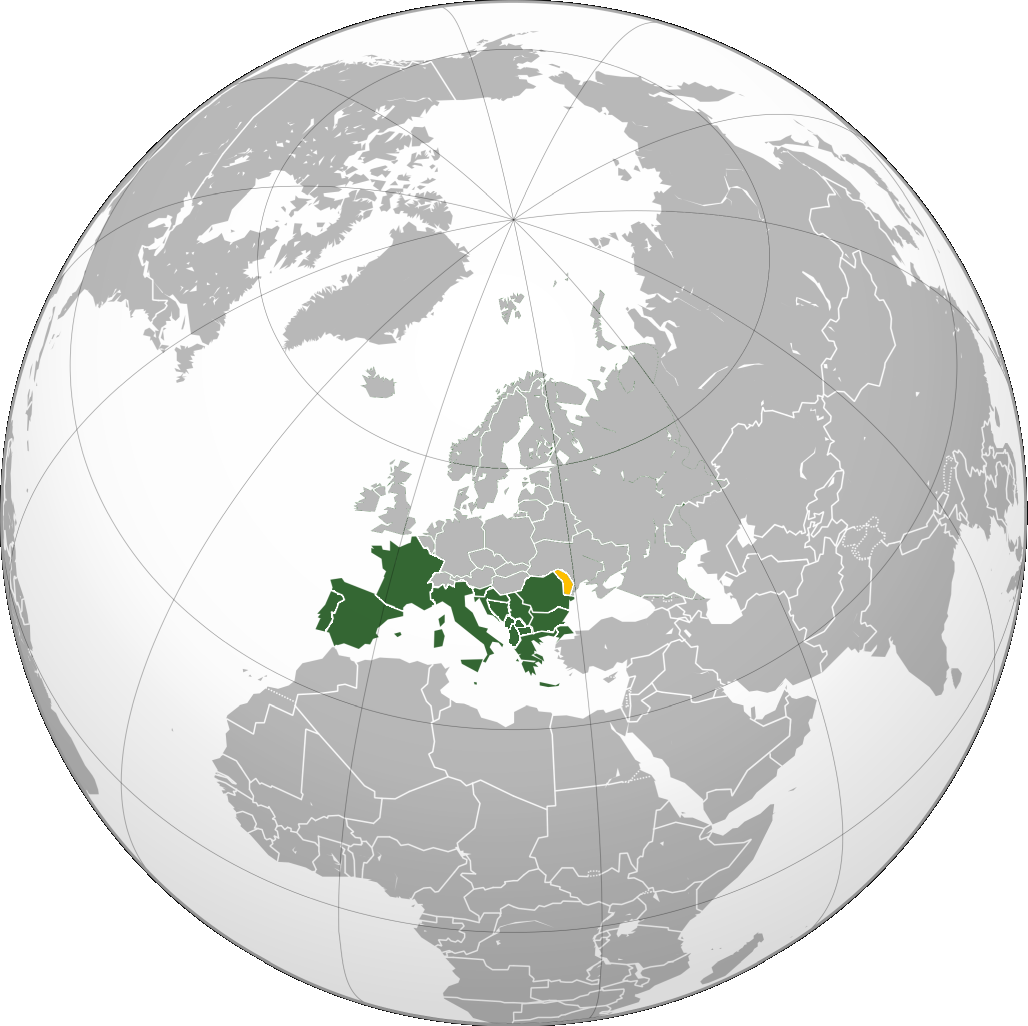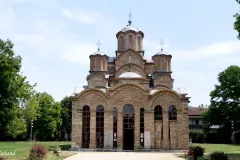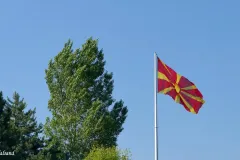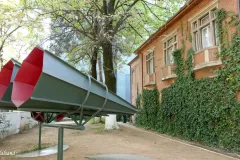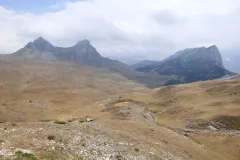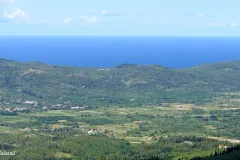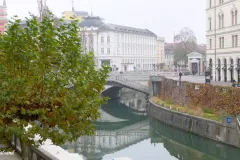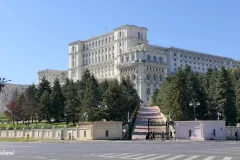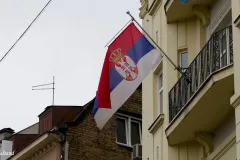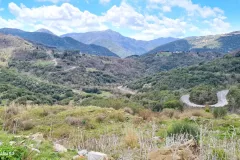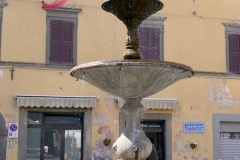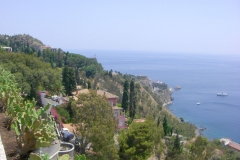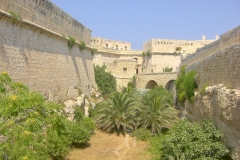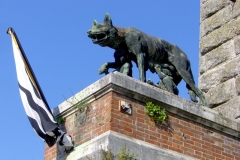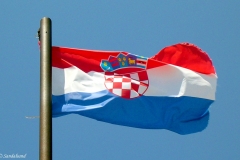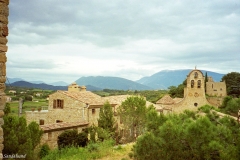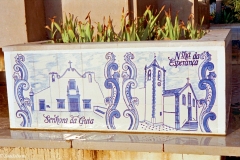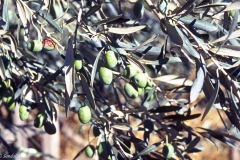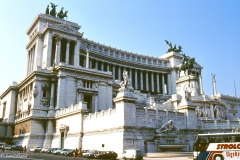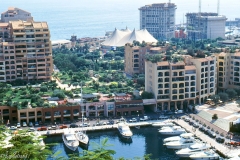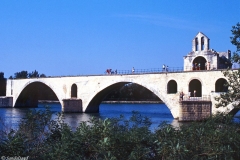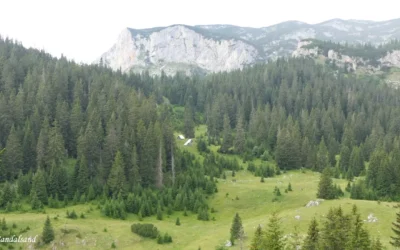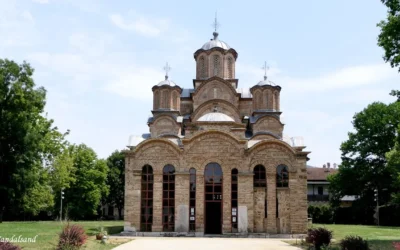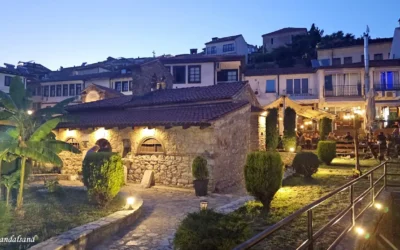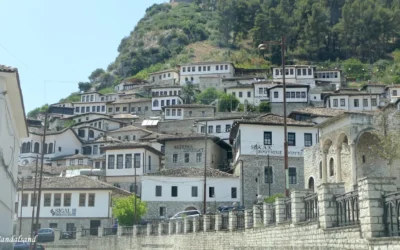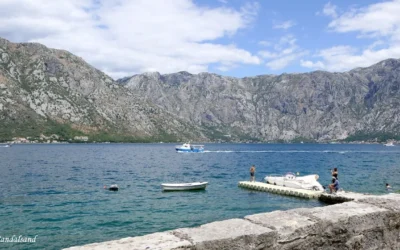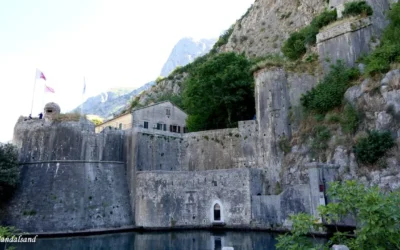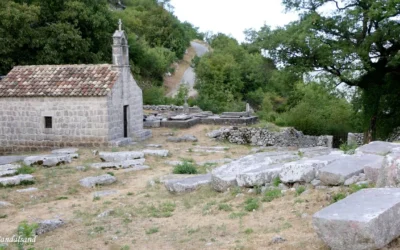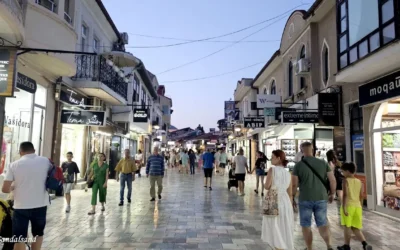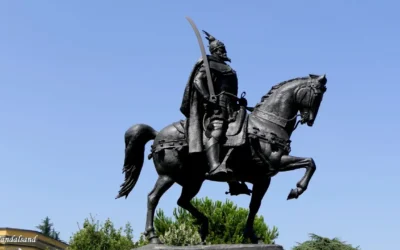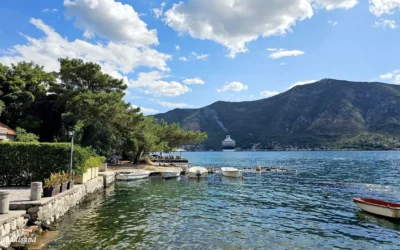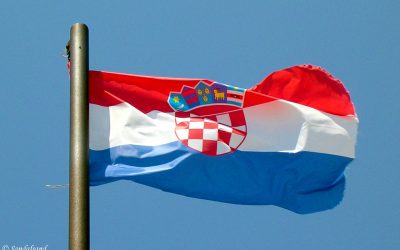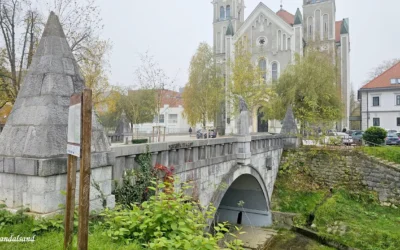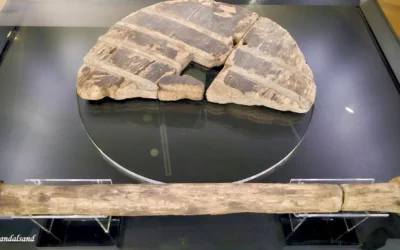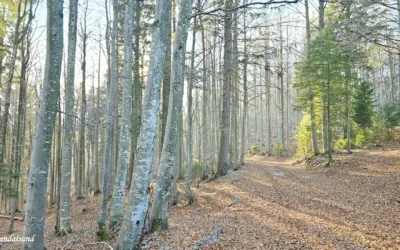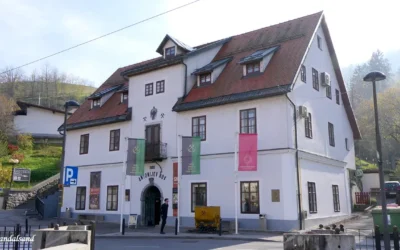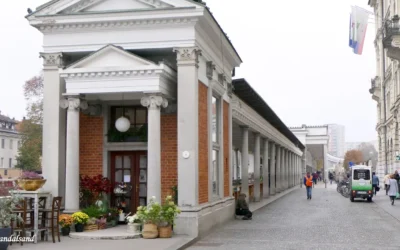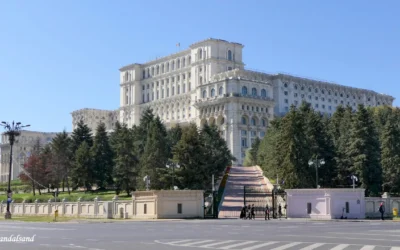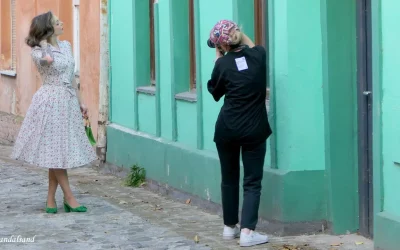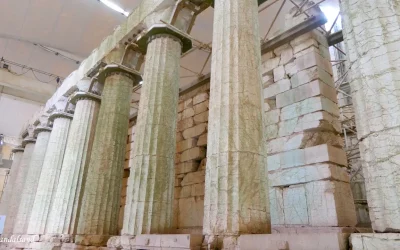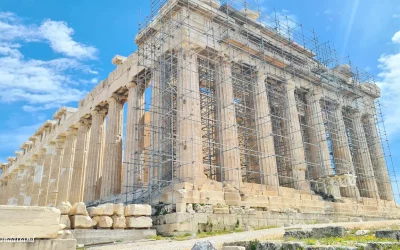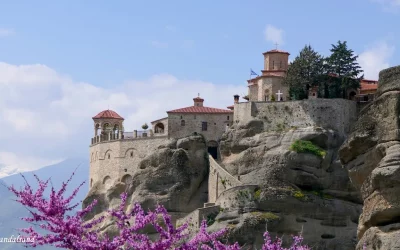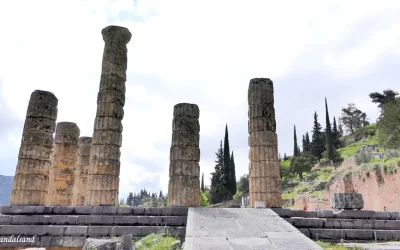Intro
Countries
Photos
Blog
Facts
Overall impressions
We were astonished and very tempted to buy whatever we could. Unfortunately, our means of transportation rendered that temptation unfeasible.
Italy is in itself one giant antiquity market, in my view. The country had its two historic heydays during the Roman Empire and the Renaissance, a millennium apart. In between those periods and ever since, the country has dwindled into not much more than showing off the remains of its past. Tourists flock in to admire the Coliseum and the Sistine Chapel, the two most known buildings of those two eras.
Sad to say that goes for much of the rest of Southern Europe as well. I am quite pessimistic for the future of this large and varied region (and for the rest of Europe as well). It seems to be splitting apart once more, promoting self-interests and losing in the global competition like the rest of the old world. On the other hand, I find this famous quote quite illustrative in an amusing yet informative way.
In Italy, for 30 years under the Borgias, they had warfare, terror, murder and bloodshed, but they produced Michelangelo, Leonardo da Vinci and the Renaissance. In Switzerland they had brotherly love, they had 500 years of democracy and peace – and what did that produce? The cuckoo clock.” (Orson Welles)
Countries
Albania | Andorra | Bosnia and Herzegovina | Bulgaria | Croatia | France | Greece | Italy | Kosovo | Malta | Moldova | Monaco | Montenegro | North Macedonia | Portugal | San Marino | Romania | Serbia | Slovenia | Spain | Vatican (Holy See)
I have made it to 19 independent countries out of 21. Click the links above to view all articles from a particular country.
My definition of Southern Europe are the countries adjacent to the Mediterranean Sea and on the west coast of the Black Sea. Give or take a few for practical purposes. Portugal borders for instance the Atlantic. Cyprus is politically and culturally also part of this region, but I have chosen to group it where it belongs geographically, as part of what I have called the Middle East and Africa.
Kosovo is not universally accepted as an autonomous country, and has not been allowed membership of the United Nations. The Vatican is recognised by other countries, but it has preferred to stay outside the UN.
This is a map of the region and Sandalsand’s visited and non-visited countries.
Photo galleries
Open the box to view a multitude of picture galleries from Sandalsand’s travels in this region.
Click to show or hide
For the best experience, open a picture gallery in a new tab or window.
Posts from Southern Europe
World Heritage #0100 – Durmitor National Park
Discover Montenegro's Durmitor National Park, a site of towering peaks, deep canyons, glacial lakes, and unspoiled alpine nature. The UNESCO World...
World Heritage #0724 – Medieval Monuments in Kosovo
Kosovo's medieval monuments are monasteries where Byzantine art, royal heritage, and centuries of faith meet in stone and fresco. The UNESCO World...
World Heritage #0099 – The Ohrid region
In the Ohrid region we find Europe’s oldest lake, medieval churches, and mountain landscapes united in a harmony of nature and culture. The UNESCO...
World Heritage #0569 – Historic Centres of Berat and Gjirokastra
Explore Albania's UNESCO sites Berat and Gjirokastra, where Ottoman houses, stone streets, and hilltop citadels showcase Balkan history and culture....
World Heritage #0125 – Kotor Bay Area
Discover Kotor Bay in Montenegro - a stunning blend of natural beauty, medieval towns, and centuries of maritime and cultural heritage. The UNESCO...
World Heritage #1533 – City of Kotor
Explore the dramatic Venetian fortifications of Kotor, part of a network of 16th-17th century defences across Italy, Croatia, and Montenegro. The...
World Heritage #1504 – Stećci Medieval Tombstones Graveyards
The Stećci tombstones are a medieval heritage shared by four Balkan countries, uniting art, faith, and history in unique stone carvings. The UNESCO...
Pictures from Kosovo
This is a collection of pictures from Kosovo. The tiny country in the Balkans is a contested one but is developing rapidly. If you look up all...
Pictures from North Macedonia
This is a collection of pictures from North Macedonia. They are from different places in the western parts of the country. If you look up all...
Pictures from Albania
This is a collection of pictures from Albania. They are from different places in the north and central regions of the country. If you look up all...
Pictures from Montenegro
This is a collection of pictures from Montenegro. They are from different parts - the Adriatic coastline and the mountains in the northeast. If you...
Pictures from Croatia
This is a collection of pictures from Croatia, the result of trips to various places on the Adriatic coast. If you look up all articles from...
World Heritage #1643 – The works of Jože Plečnik in Ljubljana
Jože Plečnik reshaped Ljubljana between the World Wars, crafting a timeless vision that defined Slovenia’s capital and its national identity. The...
World Heritage #1363 – Pile Dwellings
The pile dwellings around the Alps consist of 111 small sites with the remains of stilt house settlements from around 5000 to 500 B.C. The UNESCO...
World Heritage #1133 – Ancient and Primeval Beech Forests
Discover Europe's Ancient and Primeval Beech Forests—93 protected areas across 18 countries, showcasing the beech tree's remarkable post-Ice Age...
World Heritage #1313 – Heritage of Mercury
Explore the rich history of Almadén (Spain) and Idrija (Slovenia), home to the world's largest mercury mines, now UNESCO World Heritage Sites. The...
Pictures from Slovenia
This is a collection of pictures from Slovenia. It is the result of a single trip to this country in southern Europe. If you look into this link to...
Pictures from Romania
This is a collection of pictures from Romania. It is the result of a single trip to this country in south-eastern Europe. If you look into this link...
Pictures from Serbia
This is a collection of pictures from Serbia. It is the result of a single trip to the capital city of Belgrade (Beograd). If you look into this...
World Heritage #0392 – Temple of Apollo Epicurius
The temple of Apollo Epicurius at Bassae is one of the best-preserved monuments of the ancient Greek civilisation, from the 5th century BC. The...
World Heritage #0404 – Acropolis of Athens
The Acropolis of Athens has been on my bucket list for as long as I can remember. Getting there was a huge relief. I had finally reached the cradle...
Pictures from Greece
This is a collection of pictures from Greece, the result of trips to different parts of the country but mostly the islands. If you look up all...
World Heritage #0455 – Meteora
Meteora is a dramatic landscape in Greece with tall sandstone peaks. On the tops we may visit a number of centuries old monasteries. The UNESCO...
World Heritage #0393 – Delphi
Delphi is now an archaeological site. It once hosted the most famous oracle of ancient Greece and was regarded as the centre of the world. The...
A fact sheet
This is Wikipedia’s introduction to Europe as a whole.
Map and numbers
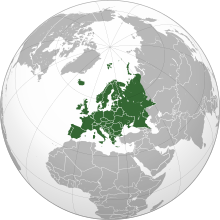
- Area: 10,180,000 km2
- Population: 741,447,158 (2016)
- Population density: 72.9/km2
- Nominal GDP: $20.2 trillion (2017)
- PPP GDP: $26.7 trillion (2017)
- Per capita GDP: $27,330 (2017)
- HDI: 0.845
- Countries: 50 sovereign states, one observer, 6 with limited recognition
- Dependencies: 6 dependencies
Geography
Europe is a continent located entirely in the Northern Hemisphere and mostly in the Eastern Hemisphere. It is bordered by the Arctic Ocean to the north, the Atlantic Ocean to the west and the Mediterranean Sea to the south. It comprises the westernmost part of Eurasia.
Since around 1850, Europe is most commonly considered as separated from Asia by the watershed divides of the Ural and Caucasus Mountains, the Ural River, the Caspian and Black Seas and the waterways of the Turkish Straits. Though the term “continent” implies physical geography, the land border is somewhat arbitrary and has moved since its first conception in classical antiquity. The division of Eurasia into two continents reflects East-West cultural, linguistic and ethnic differences, some of which vary on a spectrum rather than with a sharp dividing line. The border does not follow political boundaries, with Turkey and Russia being transcontinental countries.
Europe covers about 10,180,000 square kilometres, or 2% of the Earth’s surface (6.8% of land area). Politically, Europe is divided into about fifty sovereign states of which the Russian Federation is the largest and most populous, spanning 39% of the continent and comprising 15% of its population. Europe had a total population of about 741 million (about 11% of the world population) as of 2016. The European climate is largely affected by warm Atlantic currents that temper winters and summers on much of the continent, even at latitudes along which the climate in Asia and North America is severe. Further from the sea, seasonal differences are more noticeable than close to the coast.
History
Europe, in particular ancient Greece, was the birthplace of Western civilization. The fall of the Western Roman Empire in 476 AD and the subsequent Migration Period marked the end of ancient history and the beginning of the Middle Ages. Renaissance humanism, exploration, art and science led to the modern era. From the Age of Discovery onwards, Europe played a predominant role in global affairs. Between the 16th and 20th centuries, European powers controlled at various times the Americas, almost all of Africa and Oceania and the majority of Asia.
The Age of Enlightenment, the subsequent French Revolution and the Napoleonic Wars shaped the continent culturally, politically and economically from the end of the 17th century till the first half of the 19th century. The Industrial Revolution gave rise to radical economic, cultural and social change in Western Europe and eventually the wider world. Both world wars took place for the most part in Europe, contributing to a decline in Western European dominance in world affairs by the mid-20th century as the Soviet Union and the United States took prominence. During the Cold War, Europe was divided along the Iron Curtain between NATO in the West and the Warsaw Pact in the East, until the revolutions of 1989 and fall of the Berlin Wall.
Source
Wikipedia on a Creative Commons Attribution-ShareAlike License. Date: 2018-06-22.

